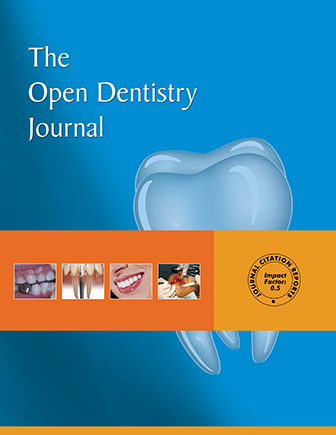All published articles of this journal are available on ScienceDirect.
Evaluation of Neutrophilic Receptors; CXCL8 and CXCR2 in Patients with Chronic Periodontitis Compared to Healthy Subjects by Real Time PCR Method
Abstract
Objective:
This study aimed to evaluate the levels of CXCL8 and its receptor (CXCR2) in gingival tissue neutrophils from patients with chronic periodontitis compared to periodontal healthy subjects using Real Time PCR method.
Methods:
The test group consisted of 21 patients with chronic periodontitis and the control group consisted of 18 healthy individuals. In both groups, gingival tissue samples were obtained during periodontal surgery.CXCL8 and CXCR2 RNA in tissue samples were examined by PCR method, and then the levels of genes expression were measured. Mann-Whitney U nonparametric test was used for statistical analysis.
Results:
CXCL8 gene expression in the gingival tissue of the test group with chronic periodontitis was significantly higher than the control group (p=0.028). CXCR2 gene expression in the gingival tissue of the test group with chronic periodontitis was significantly lower than the control group (p=0.043). In both test and control groups, there was a negative correlation between CXCL8 and CXCR2 gene expression. This correlation was statistically significant in the test group (p=0.001), but there was no significant correlation in the control group (p=0.431).
Conclusion:
The results of this present study suggested that the level of gene expression for CXCL8 was greater in patients with chronic periodontitis and CXCR2 was greater in healthy individuals. Although in people with chronic periodontitis, CXCR2 decreases slightly as CXCL8 levels increase.


